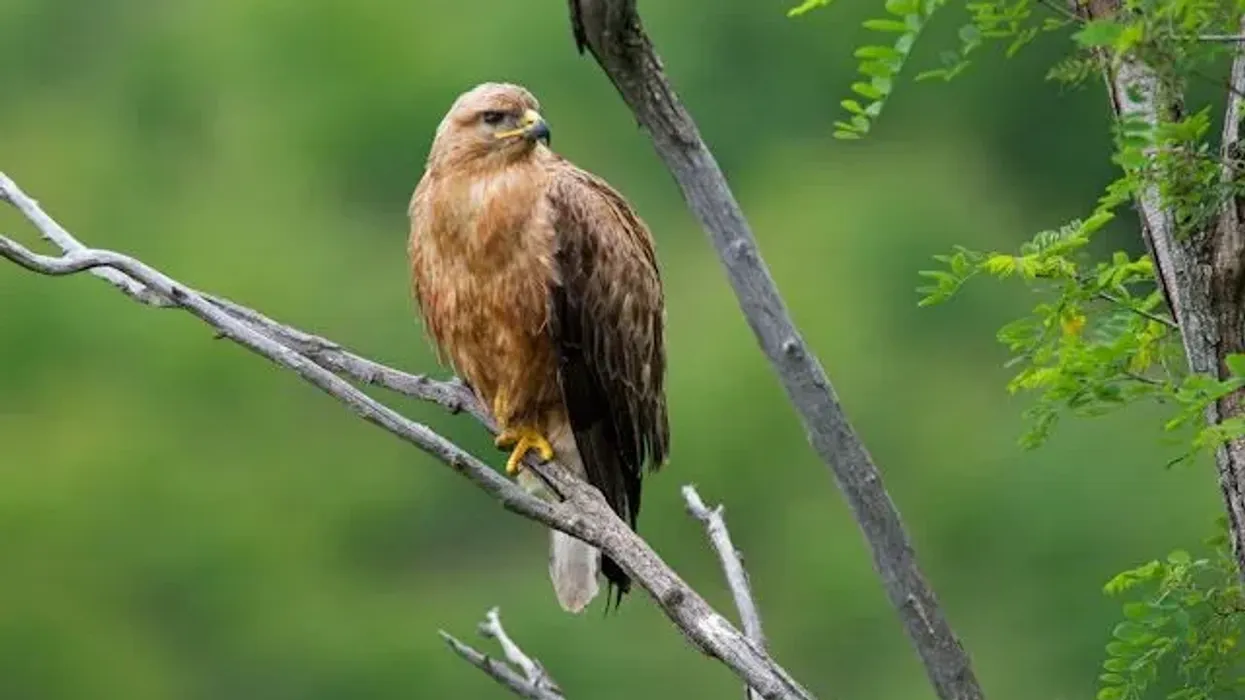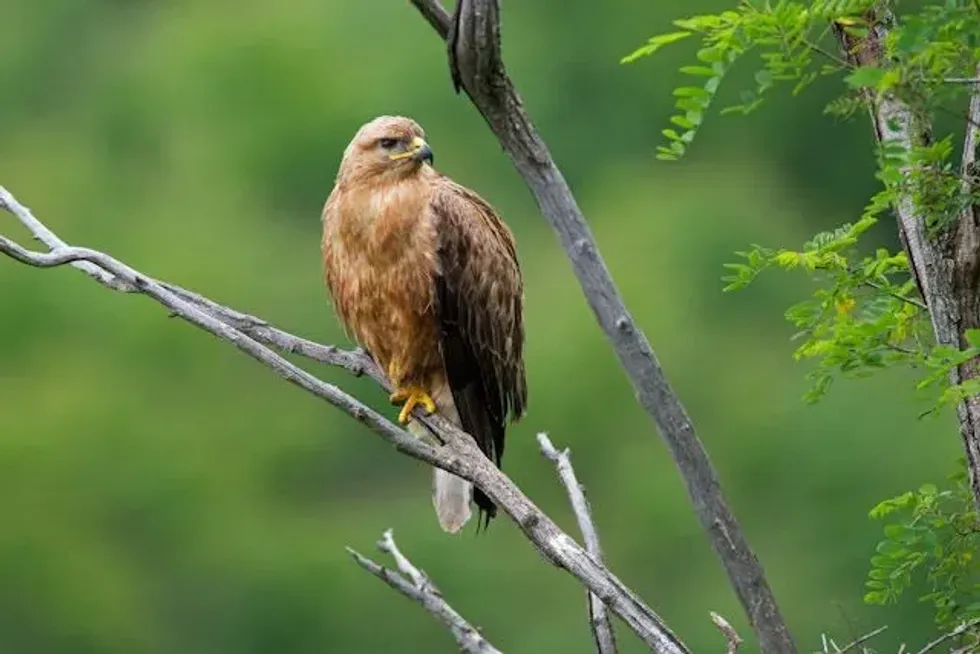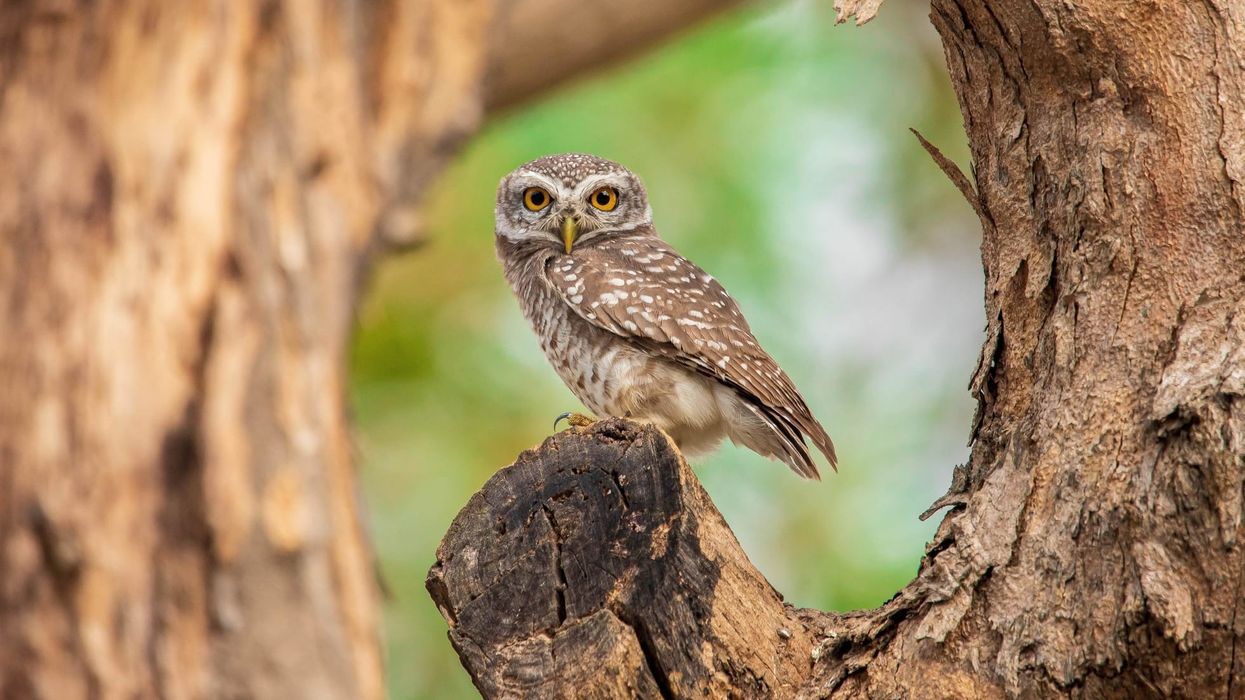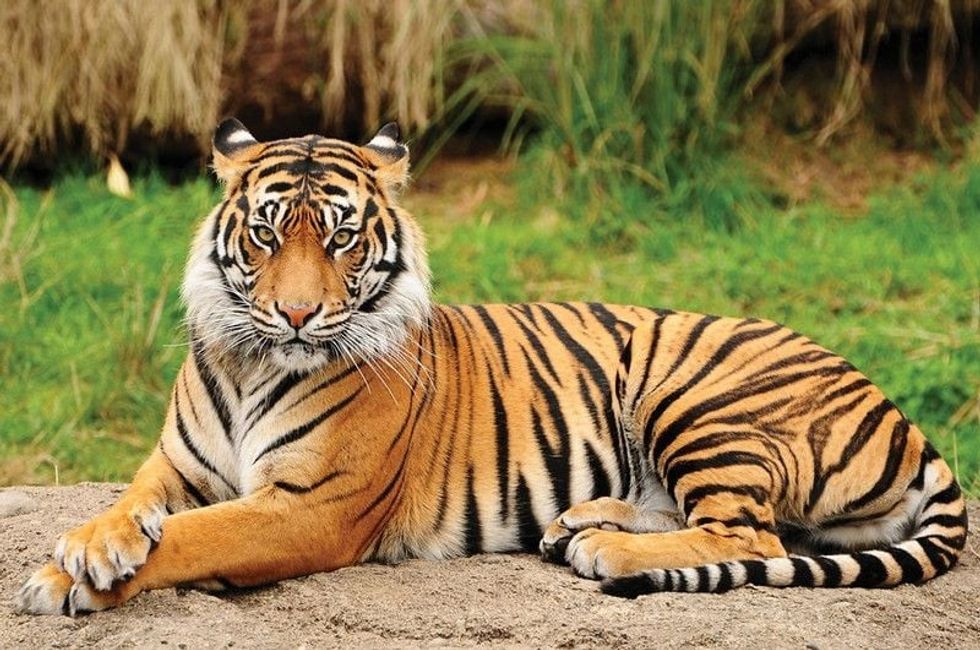One of the largest birds in its genus, the long-legged buzzard (Buteo rufinus), is a bird of prey that is found in a number of places including but not limited to, northern Africa, south-eastern Europe, and central and western Asia.
Birds of prey or raptors are characterized by their carnivorous diet of vertebrates and excellent eyesight, which they use to spot their food.
This buzzard is a migratory bird, except in some parts of its population. The overall population is fairly stable and it has also been recently found in the Apulian region of south-eastern Italy.
It has a striking appearance in all of its three different morphs or forms.
In each of them, it has a pale head, a dark carpal patch, and a dark trailing edge. Their beautiful red or orange tail in their rufous morph is a sight to behold.
Because of its many morphs, it is often confused with many other species, such as the common buzzard (Buteo buteo), and one of its subspecies, the steppe buzzard, and the rough-legged buzzard (Buteo lagopus), because of their similar appearance and structure.
The long-legged buzzard has two subspecies, B. r. rufinus and B. r. cirtensis, of which the latter is a non-migratory bird and much paler in color than the former.
If you want to check out more amazing facts about other birds, check out our common nighthawk facts and sea eagle fun facts pages.
Long Legged Buzzard Interesting Facts
What type of animal is a long legged buzzard?
The long-legged buzzard is a type of bird, more specifically, a bird of prey or raptor.
What class of animal does a long legged buzzard belong to?
The long-legged buzzard is a member of the class Aves, the family Accipitridae, and genus Buteo.
How many long legged buzzards are there in the world?
Though the exact number of long-legged buzzards in the world is quite hard to calculate, its population has been estimated to be in the range of 100,000-499,999 individuals.
Where does a long legged buzzard live?
This species of buzzards are found in a large number of countries like Algeria, Morocco, Tunisia, and Libya in northern Africa. In Europe, they can be spotted in Hungary, Ukraine, Romania, Bulgaria, and Greece.
Recently, they have also been found in the Apulian region of south-eastern Italy, and some parts of Spain and Gibraltar. This species is also known to occur in the Middle East in Syria, Lebanon, Iran, Iraq, and the United Arab Emirates, and can also be found in the Indian subcontinent.
The buzzards in northern Africa tend to move only locally, but those living in the northern parts of its range will migrate to spend their winters in the southern parts in the fall during the months of August to November. These birds return to their breeding grounds in the spring in February to late March.
What is a long legged buzzard's habitat?
These buzzards are known to prefer open and dry spaces, and thus, inhabit steppes, semi-deserts, dry shrublands, open plains, grasslands, mountains, and other rocky landscapes. This species has been known to be adaptable to different habitats, as they have been seen in many coastal areas as well as in forest habitats where open areas are available.
They mainly perch on bushes, hedges, power poles, and cliffs. They have been observed at elevations of up to 5,200-16,000 ft (1,600-5,000 m) above sea level.
Who does a long legged buzzard live with?
These birds mainly remain solitary but may also be seen in pairs within their territory. They can become quite sociable and form small flocks while migrating. They may even coexist with a number of birds such as some species of eagles, and the saker falcon, with whom they often share nesting areas.
How long does a long legged buzzard live?
In the wild, their lifespan is estimated to be about eight and a half years but it is expected to be longer due to the fact that some similar species have a longer lifespan as well.
How do they reproduce?
The long-legged buzzards have a different breeding season depending on their geographic range. Similarly, they also prefer different types of places to lay their nests.
While some of them may prefer cliffs to lay their nests on, others might prefer trees or bushes. They are often made from sticks, twigs, and lined with leaves or straw. The clutch size is usually two to six eggs, and the nesting success rate is pretty good.
The incubation period may last 28-30 days, after which fuzzy white chicks are born. The chicks are able to leave their nests after 40-46 days, after which these younger birds disperse north of their breeding grounds.
What is their conservation status?
The population of the long-legged buzzard all over its range is considered stable. Though threats like pesticide poisoning, electrocution, and habitat destruction still remain, these are hardy birds who can adapt to a number of habitats. Thus, their species has been categorized as Least Concern by the IUCN Red List.
Long Legged Buzzard Fun Facts
What does the long legged buzzard look like?
The appearance of the long-legged buzzard varies a lot due to its three or four different morphs. The adults can either be dark, rufous, or pale in their coloration.
All of its morphs have many physical attributes in common, which might make this bird a little easier to differentiate from other similar species such as the steppe buzzard and the rough-legged buzzard. All of them have a dark carpal patch, a dark trailing edge, a long tail, and a pale head.
The adults with a dark morph may or may not have bars on their dark tails whereas the rufous and light morphs usually have long, unbarred tails.
The rufous morph can have a red or orange tail, along with a rich rufous plumage. The underwing coverts in all the morphs are pale or completely white.
They have yellowish feet with strong and big talons. Juveniles are much paler in color, and the dark trailing edge, as well as the carpal patch, is less pronounced than in adults.

How cute are they?
While the chicks of this species may look very cute with their white fuzz, the adults tend to look much more intimidating than cute.
How do they communicate?
The long-legged buzzard is not a particularly vocal bird but its rare call sounds like that of a common buzzard, except it is much shorter and higher-pitched.
How big is a long legged buzzard?
These birds have slight sexual dimorphism in their size. Unlike many species of animals, the females are bigger in size than the males.
The average body length of these birds falls in the range of 20-26 in (50-66 cm) but their wingspan can be as big as 50-58 in (126-148 cm). The rough-legged buzzard is also estimated to be of the same size.
How fast can a long legged buzzard fly?
The speed of the long-legged buzzard in flight is unknown but the red-tailed hawk of the same genus has been known to fly at speeds of 20-40 mph (32-64 kph).
How much does a long legged buzzard weigh?
Just like their body length, female long-legged buzzards are heavier than males as well. The average weight in their species can be 1.3-3.8 lb (590-1,760 g).
What are the male and female names of the species?
There are no specific names for the male and female buzzards of this species.
What would you call a baby long legged buzzard?
A baby long-legged buzzard does not have a specific name but baby birds, in general, are called chicks when they hatch out of their eggs, and juveniles when they are immature or not adult yet. Usually, when they are juveniles, these younger birds disperse north of the breeding grounds to find a new territory.
What do they eat?
This bird has a carnivorous diet and is considered to be an opportunistic feeder as it is known to feed on over 200 prey species. These include small mammals like mole rats, hamsters, squirrels, as well as birds, insects, reptiles, and invertebrates. They also consume carrion during the non-breeding months.
Are they dangerous?
As gruesome as they may seem, these buzzards are not dangerous to human beings. They are only known to attack small animals for food and do not have a reason to attack humans.
Would they make a good pet?
It is not clear whether they can be a pet, but it is possible to train them to follow some simple commands.
Did you know...
Long-legged buzzards are known for being one of the few birds of prey that can hover in one place while hunting prey. These buzzards can hover for several minutes before swooping down quickly to catch their prey. This is common in rough-legged buzzards (Buteo lagopus) as well, who do it more often than other buzzards.
Why are they called long legged buzzards?
These birds are called so because of their relatively longer and more powerful legs than any other similar birds.
Long-legged buzzard vs common buzzard
The long-legged buzzards and common buzzards are often hard to differentiate when seen in the wild because of similar variations in their plumage. They also have common breeding grounds and migration routes.
However, the common buzzard and its subspecies have darker heads, barred feathers, and much lighter carpal patches. The common buzzards are also somewhat smaller in size than the long-legged birds.
Here at Kidadl, we have carefully created lots of interesting family-friendly animal facts for everyone to discover! For more relatable content, check out these martial eagle facts and black vulture facts for kids.
You can even occupy yourself at home by drawing one on our free printable long legged buzzard coloring pages.








